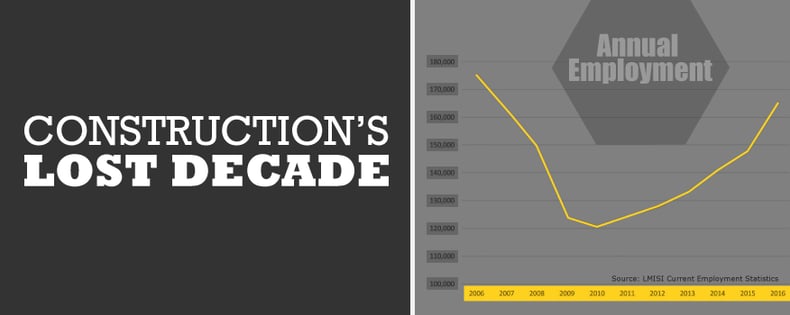 All industries are in a constant cycle of laborers, with new, young workers learning the business, middle-age workers keeping the wheels turning and older workers retiring. When each segment of workers continues to do the expected, all is well.
All industries are in a constant cycle of laborers, with new, young workers learning the business, middle-age workers keeping the wheels turning and older workers retiring. When each segment of workers continues to do the expected, all is well.
But in the construction industry, one of those segments—new, young workers—are no longer entering the construction workforce in great enough numbers and that is fast becoming a problem for everyone.
From 2006 to 2016, Michigan’s construction industry underwent a complete labor cycle and lost almost one third of its workforce. Reaching peak employment in 2006 with 178,400 construction workers, the industry then shed over 55,000 workers, dropping to 120,000 in 2010. Since then, construction employment has steadily increased. The latest Michigan Bureau of Labor Market Information and Strategic Initiatives (LMISI) data shows the Michigan construction industry employing 174,600 workers.
As more and more veteran construction industry workers are reaching retirement age, the need for new workers has never been so great and the response to this need so small. There are several reasons young people are not seeking work in the professional construction trades, including the recent push toward four-year college degrees and away from apprenticeships and other training. Now Michigan Construction, in partnership with other industry stakeholders, is on a mission to change the status quo and show young workers how many great careers are available right now in construction.
To get a firm handle on this mission, we developed the report “Michigan’s Construction Industry: By the Numbers” detailing the past and current state of the construction industry labor force. We are also working with the Construction Association of Michigan (CAM), to produce a report forecasting the construction industry workforce of tomorrow. This report will provide information and tools for employers and those in construction education, training, and development.
Download your copy of By the Numbers today and you will automatically receive the workforce forecast report when it becomes available.

